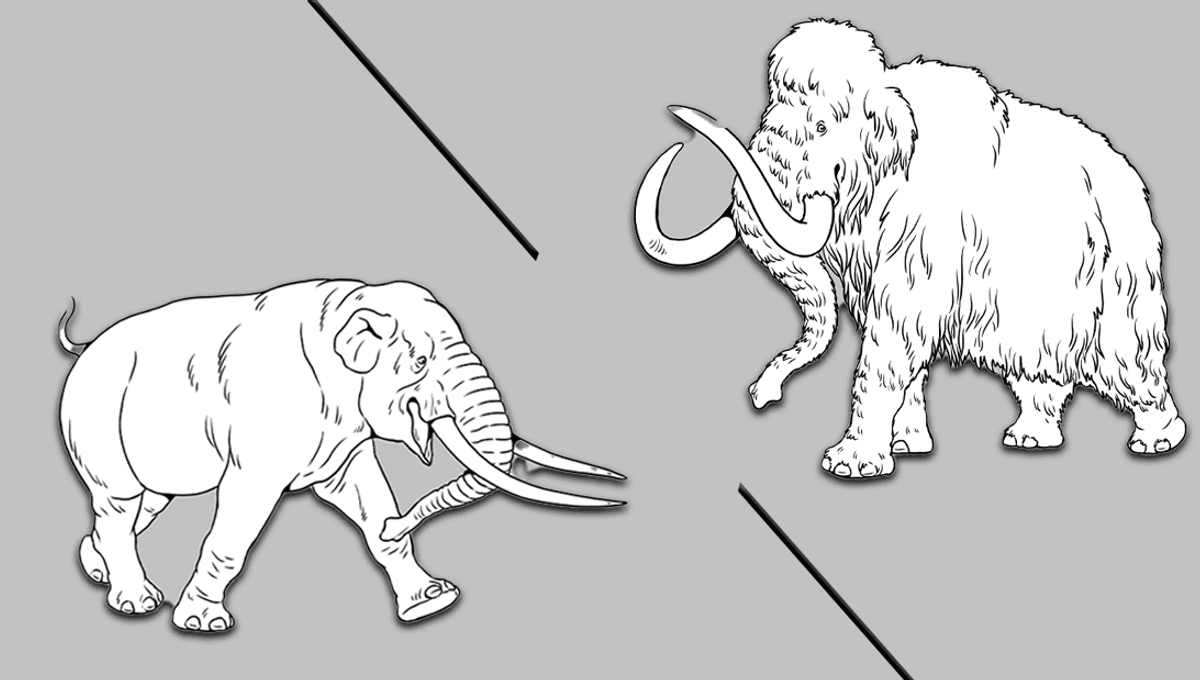
Who could resist an ancient elephant-like creature that roamed the Earth long before humans came onto the scene, especially after multiple Ice Age films made us fall in love with Manny. But do you know your mammoths from your mastodons? It’s time to take a closer look at the differences between these two ancient beasts.
Mastodons, modern elephants, and mammoths are all related, belonging to the order Proboscidea. The ancestors of elephants and mammoths separated about 5 million years ago, while the mastodons branched off even earlier at 25 million years ago, according to the American Museum of Natural History.
The oldest mastodons lived around 24 to 28 million years ago during the Oligocene and are the older of the two ancient elephant-like creatures. American mastodons (Mammut americanum) evolved later and roamed around in Central and North America during the Pleistocene, spending a lot of their time eating vegetation. Other species of mastodon were also widespread across the world.
Their name, “mastodon”, comes from the naturalist Georges Cuvier, who so named them because of the shape of their teeth, which were said to resemble breasts or nipples. This is one of the key differences between mastodons and mammoths, as mastodons had teeth with unusual cusps specially adapted for eating woody plants, while mammoths had – and modern elephants have – typically more flat ridged molars for chewing grasses.
Mammoths are probably most famous for the impressive woolly coats of Mammuthus primigenius. Underneath all that hair, however, they would have looked similar to a living Asian elephant with small ears. Asian elephants and mammoths are more closely related than either is to a living African elephant.
Both male and female mammoths also had tusks, unlike the mastodon, in which only the males carried tusks. Mammoth tusks grew in a curve, while mastodons had straighter ones.
Though both mastodons and mammoths resembled modern elephants, mastodons were the smaller of the two. The San Diego Natural History Museum suggests female mastodons would have been 2.1 meters (7 feet) in height and males over 3 meters (10 feet); they could even have weighed as much as 6 tons (5443 kilograms). The largest species of mammoth, on the other hand, would have weighed around 10 tons and stood at 4.5 meters (14.7 feet) at the shoulder.
Mastodons’ habitat is thought to have been pine forests, or even large boggy areas with a lot of larch and spruce trees, with their toes splayed to allow them to walk on such a surface. In comparison, mammoths would have grazed in grassier regions.
Both are now extinct, but mastodons are thought to have done so roughly 13,000 years ago. Wooly mammoths, on the other hand, began to go extinct around 10,000 years ago, with only isolated pockets surviving until around 4,000 years ago – though some scientists are looking at whether we could bring back them back.
All “explainer” articles are confirmed by fact checkers to be correct at time of publishing. Text, images, and links may be edited, removed, or added to at a later date to keep information current.
Source Link: Mastodon Vs Mammoth: What's The Difference?